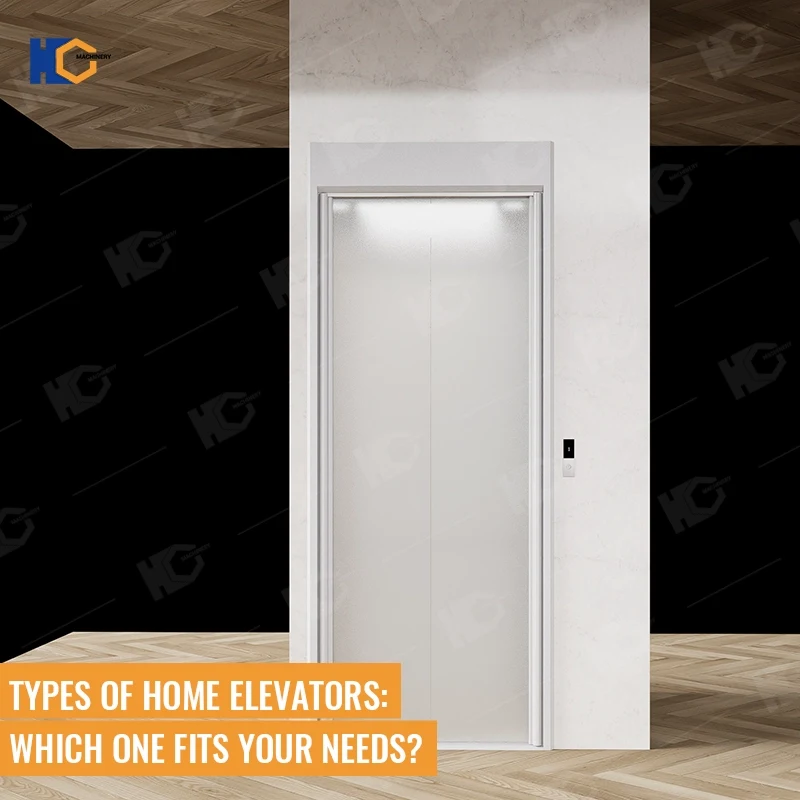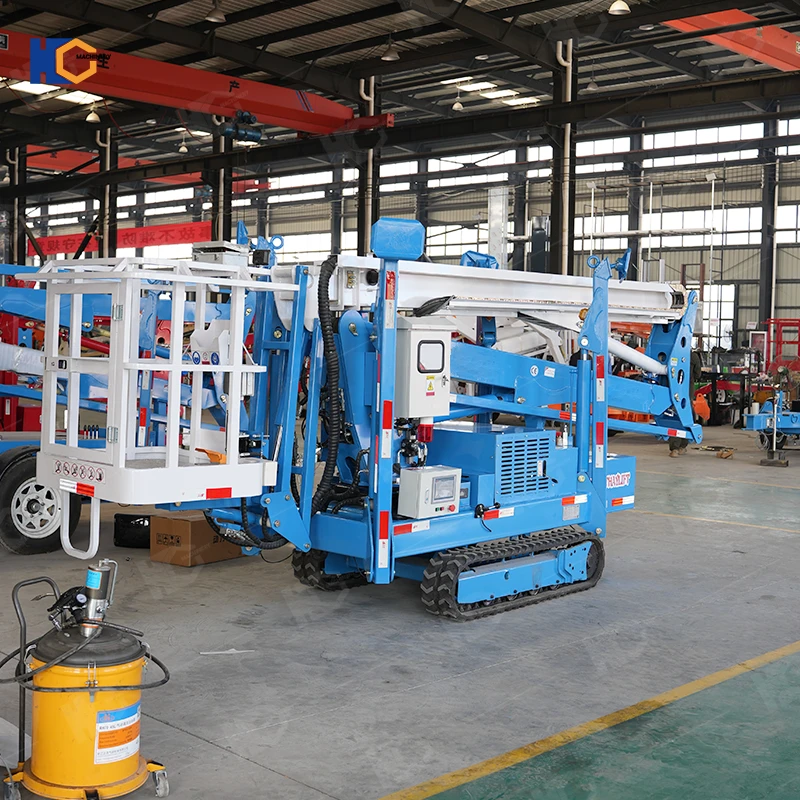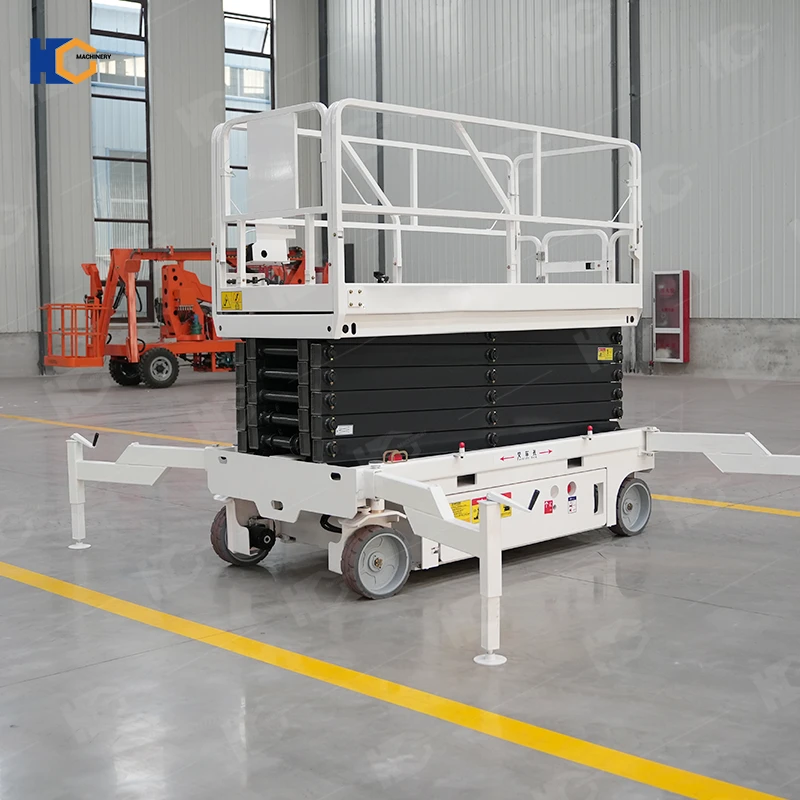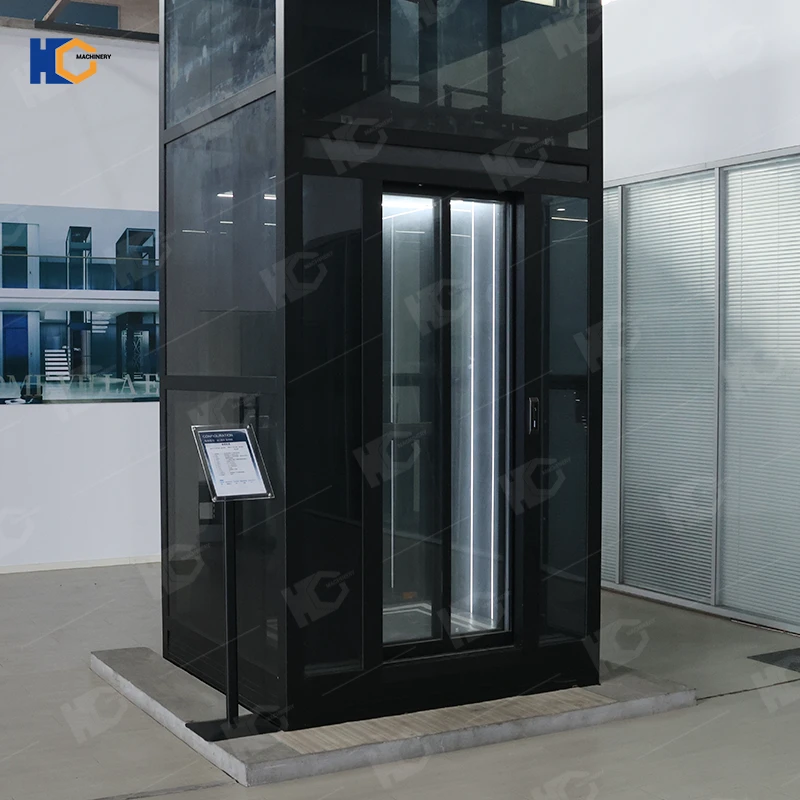Home elevators are becoming an increasingly popular feature in modern residences, driven by several key factors. As populations age globally, more homeowners are seeking solutions that allow them to age comfortably in place while maintaining independence and mobility. At the same time, luxury home buyers are incorporating elevators as both functional elements and stylish design statements that enhance property value. Additionally, growing awareness of accessibility needs has made residential elevators a practical choice for families with members who have mobility challenges.
When considering a home elevator, there are several important factors to evaluate. Space requirements will determine which systems can physically fit within your home's layout. Budget considerations must account for both initial installation costs and long-term maintenance. Safety features should be thoroughly examined, particularly for households with children or elderly users. Finally, design preferences play a crucial role, as today's elevators come in various styles from sleek glass models to traditional wood-paneled cabs that can complement any architectural aesthetic.
This guide provides a detailed comparison of the main types of home elevators currently available, examining their mechanisms, advantages, limitations, and ideal applications. Whether you're looking for a space-saving solution for a compact home, a heavy-duty system for frequent use, or an elegant centerpiece for your luxury residence, this overview will help you identify which option best fits your specific needs and circumstances. By understanding the key differences between hydraulic, traction, pneumatic, and other elevator types, you'll be equipped to make an informed decision about this important home investment.
Hydraulic Home Elevators: Power and Performance for Residential Use
Among the various types of home elevators, hydraulic systems remain one of the most reliable and widely used options, particularly for larger residences. These elevators operate using a sophisticated yet straightforward mechanism: an electric pump pushes hydraulic fluid into a cylinder, which then moves a piston to lift the elevator cab. When descending, the fluid is released back into the reservoir in a carefully controlled manner, ensuring smooth operation at all times. This hydraulic power provides exceptional control over movement, resulting in what many consider the most comfortable ride quality available.
The advantages of hydraulic home elevators make them particularly suitable for certain applications. Their smooth ride quality is unmatched, with gradual acceleration and deceleration that's ideal for users sensitive to movement. With high weight capacities often exceeding 1,000 pounds, these systems can easily accommodate wheelchairs, multiple passengers, or heavy items being moved between floors. The quiet operation is another significant benefit, as the machinery is typically isolated in a separate room, minimizing noise disturbance in living areas. Many homeowners also appreciate that hydraulic systems don't require overhead clearance, making them adaptable to homes with limited vertical space above the shaft.
However, there are some important considerations with hydraulic elevators. The system requires a separate machine room (usually adjacent to the elevator shaft) to house the pump, motor, and fluid reservoir, which can be a challenge in space-constrained homes. They tend to have higher energy consumption compared to other types, especially in homes with frequent elevator use. The hydraulic fluid needs periodic maintenance - typically every few years - including checking levels, monitoring for leaks, and potentially replacing the fluid. Some homeowners may also notice a slight temperature increase in the machine room during extended operation periods.
Hydraulic home elevators are best suited for larger residences where space for a machine room is available, and where the elevator will see regular, heavy use. They're particularly ideal for:
Multi-generational households needing reliable, daily transportation
Homes requiring wheelchair accessibility
Luxury properties where ride quality is prioritized
Situations demanding heavy lifting capacity for furniture or equipment
While newer technologies like pneumatic and traction systems have gained popularity, hydraulic elevators continue to be the gold standard for power and reliability in residential settings. Their proven track record, combined with recent improvements in energy efficiency and compact designs, ensures they remain a top choice for many homeowners investing in residential vertical transportation solutions.
Traction (Cable-Driven) Elevators: Modern Efficiency for Residential Mobility
Traction elevators represent the next generation of home elevator technology, offering distinct advantages for certain residential applications. Unlike hydraulic systems, these elevators operate using a sophisticated cable-and-counterweight mechanism. Steel cables attached to the elevator car wind around a grooved pulley (sheave) connected to an electric motor. As the motor turns, the cables either lift or lower the cab, while a counterweight (typically weighing about the same as the elevator at 40% capacity) balances the system to reduce energy consumption. This efficient design eliminates the need for hydraulic fluid entirely, making it a cleaner alternative.
The benefits of traction elevators make them particularly appealing for modern homes. Their energy-efficient operation can reduce power consumption by up to 50% compared to hydraulic systems, appealing to eco-conscious homeowners. With faster travel speeds (typically 100-200 feet per minute versus 50-150 for hydraulic), they're ideal for taller residences where quick floor-to-floor transit matters. The absence of hydraulic fluid removes concerns about leaks or fluid maintenance, while the counterweight system provides exceptionally smooth acceleration and deceleration. Many models also offer more precise floor-leveling capabilities, stopping within ¼ inch of the target floor for easy access.
However, traction systems do present some installation challenges. They require overhead space (a machine room or compact penthouse) for the motor and sheave assembly, which may not be feasible in some existing homes. The higher initial cost (typically 15-30% more than comparable hydraulic systems) can be a barrier for some budgets. While modern gearless traction motors are quiet, some noise from the machinery may be noticeable in immediately adjacent living spaces. The system also depends on regular cable inspections and potential replacements every 5-10 years as part of routine maintenance.
Traction elevators excel in specific residential scenarios:
Multi-story homes (3+ floors) where speed and efficiency matter most
Eco-friendly residences aiming for sustainable design and operation
Modern architectural designs that can incorporate the necessary overhead space
Smart homes where integration with building automation systems is desired
High-use situations where energy savings accumulate over time
Recent advancements have made traction systems more accessible for residential use. Machine-room-less (MRL) designs now allow the motor to be mounted directly in the elevator shaft, reducing space requirements. Regenerative drives can feed energy back into the home's electrical system during operation. These innovations, combined with the system's inherent efficiency and clean operation, make traction elevators an increasingly popular choice for forward-thinking homeowners investing in long-term residential mobility solutions.
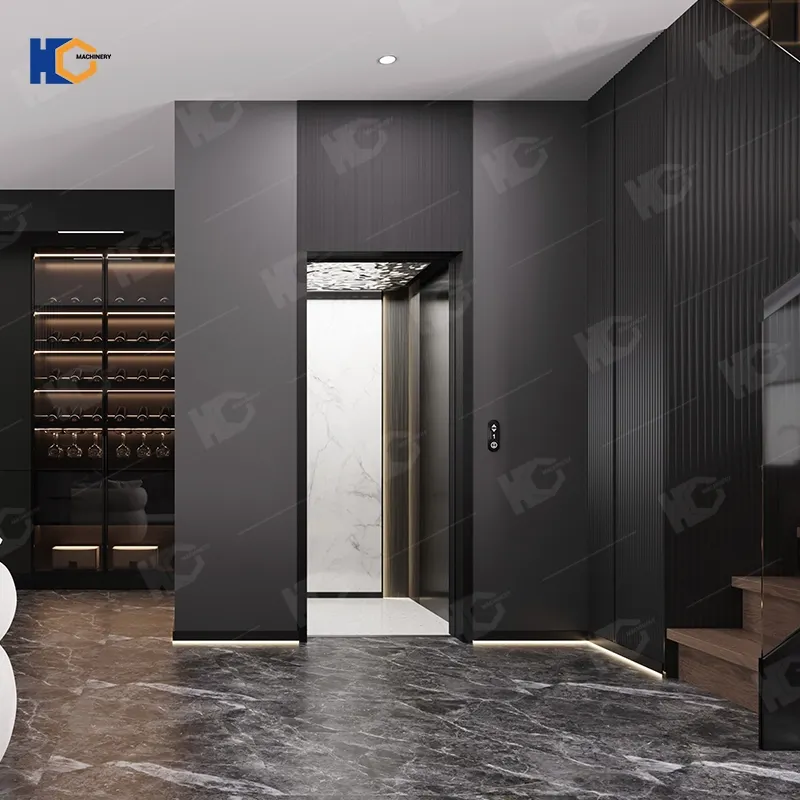
Pneumatic (Vacuum) Elevators: The Space-Saving Marvel of Modern Homes
Pneumatic vacuum elevators represent a revolutionary approach to residential vertical transportation, using cutting-edge physics instead of traditional mechanical systems. These innovative elevators operate on a simple yet brilliant principle of air pressure differentials. The cylindrical cab moves within a transparent polycarbonate tube, with the system creating a vacuum above the cab to lift it and releasing air pressure to descend. A network of industrial-grade vacuum pumps at the top of the tube precisely controls this air pressure, enabling smooth vertical movement without cables, pistons, or counterweights. This unique mechanism results in one of the most visually striking and mechanically simple elevator solutions available today.
The advantages of pneumatic vacuum elevators make them particularly appealing for specific residential applications. Their minimal construction requirements eliminate the need for extensive structural modifications - no elevator pit, machine room, or heavy support beams are necessary. The sleek all-glass design creates a stunning visual element that complements contemporary interiors while providing panoramic views during transit. Installation is remarkably quick, often completed in just 2-3 days with minimal disruption to the home. These elevators are also among the most energy-efficient options, consuming about the same power as a standard clothes dryer during operation. Safety features include automatic braking systems and emergency manual controls that allow passengers to safely exit during power outages.
However, pneumatic systems do have some inherent limitations. Their capacity is typically limited to 2-3 passengers (approximately 500 pounds maximum), making them unsuitable for wheelchair transport or moving large items. Operational speed is slower than conventional elevators, averaging about 30 feet per minute compared to 100+ feet for hydraulic or traction systems. The vacuum pumps can produce noticeable operational noise, similar to a central vacuum system, which may be distracting in quiet home environments. The transparent design, while aesthetically pleasing, offers less privacy than traditional enclosed cabs. Maintenance requires periodic inspection of the vacuum seals and pump components to ensure optimal performance.
Pneumatic vacuum elevators are ideally suited for:
Compact urban homes where space is at a premium
Contemporary residences seeking a futuristic design statement
Retrofit installations in existing homes with limited structural options
Secondary elevator solutions in larger homes needing supplemental access
Architectural showpieces where the elevator serves as a visual centerpiece
Recent technological advancements have expanded the capabilities of pneumatic systems. Newer models feature improved sound dampening, enhanced energy efficiency, and smart controls that integrate with home automation systems. While they may not replace traditional elevators for all applications, pneumatic vacuum elevators offer an innovative solution that combines striking modern design with practical functionality, particularly for space-constrained homes where conventional systems would be impractical or too invasive to install. Their unique combination of form and function continues to attract homeowners looking for both aesthetic appeal and practical vertical transportation.
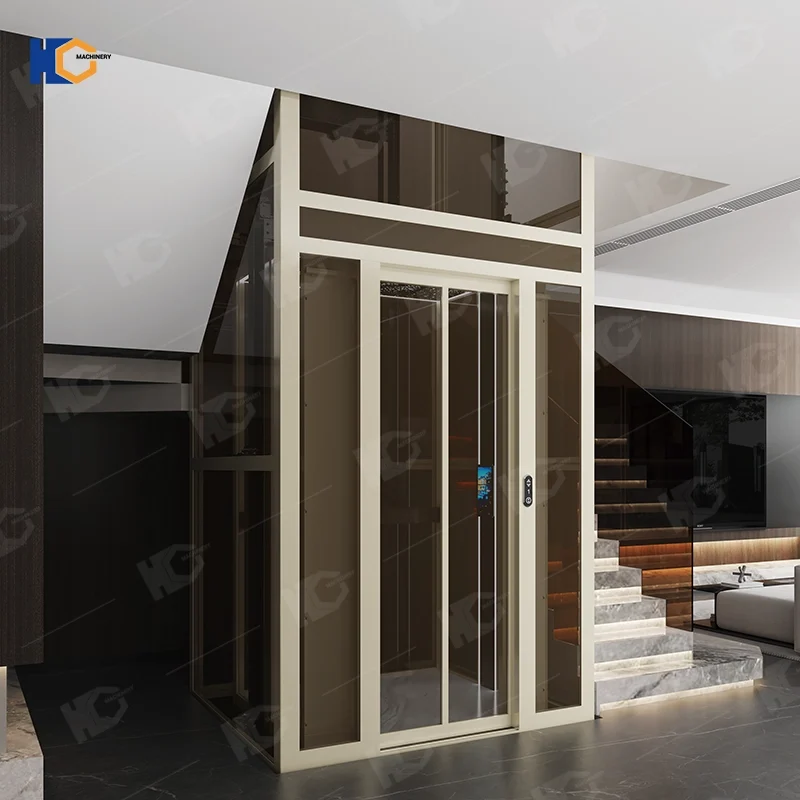
Chain/Winding Drum Elevators: The Economical Vertical Solution
Chain-driven or winding drum elevators offer one of the most straightforward and cost-effective approaches to residential vertical transportation. These systems operate through a simple yet robust mechanism: an electric motor turns a drum that winds and unwinds a heavy-duty chain or steel cable, directly lifting and lowering the elevator cab. Unlike traction systems that use counterweights, or hydraulic systems requiring fluid power, this direct-drive approach eliminates complex components, resulting in a remarkably simple mechanical design. The motor's rotation is precisely controlled by an electronic drive system, ensuring safe acceleration, travel, and deceleration between floors.
The advantages of chain-driven elevators make them particularly attractive for budget-conscious homeowners. Their compact design requires minimal space for equipment, often fitting within the elevator shaft itself without needing a separate machine room. As one of the most affordable elevator options available, they typically cost 30-50% less than hydraulic or traction systems to install. Simple installation means shorter project timelines and less structural modification to existing homes. Maintenance is straightforward, primarily involving periodic chain lubrication and motor servicing. These elevators also offer good energy efficiency, consuming less power than hydraulic systems while operating. Many models feature space-saving sliding or bifold doors that further reduce the footprint in tight areas.
However, chain-driven systems do have some notable limitations. They're generally limited to 2-3 floors of vertical travel due to the practical constraints of the winding drum mechanism. The ride quality tends to be less smooth than hydraulic or traction systems, with slightly more noticeable vibration during operation. Travel speeds are typically slower (around 40-60 feet per minute) compared to other elevator types. The chain mechanism requires more frequent lubrication and inspection than some other systems, and chain replacement may be needed every 5-7 years depending on usage. Noise levels can be higher than hydraulic elevators, though modern models have significantly improved in this regard.
Chain-driven elevators are best suited for:
Budget-conscious homeowners seeking affordable vertical access
Retrofit applications in existing homes with limited space for equipment
Low-rise residences (duplexes, triplexes) where only 2-3 floors need service
Secondary elevator needs in larger homes (e.g., between basement and ground floor)
Vacation homes or cabins where simple, low-maintenance operation is preferred
Recent advancements in chain-driven technology have addressed many traditional drawbacks. Newer models feature:
Precision gear motors for smoother operation
Self-lubricating chains reducing maintenance needs
Compact variable-frequency drives for better speed control
Improved sound insulation for quieter performance
While they may not offer the premium performance of more expensive systems, chain/winding drum elevators provide reliable, economical vertical transportation where sophisticated features aren't required. Their combination of affordability, simplicity, and space efficiency makes them an excellent choice for many residential applications where basic functionality is the primary concern. For homeowners needing straightforward access between a few floors without breaking the bank, these systems represent one of the most practical solutions in residential elevator technology.
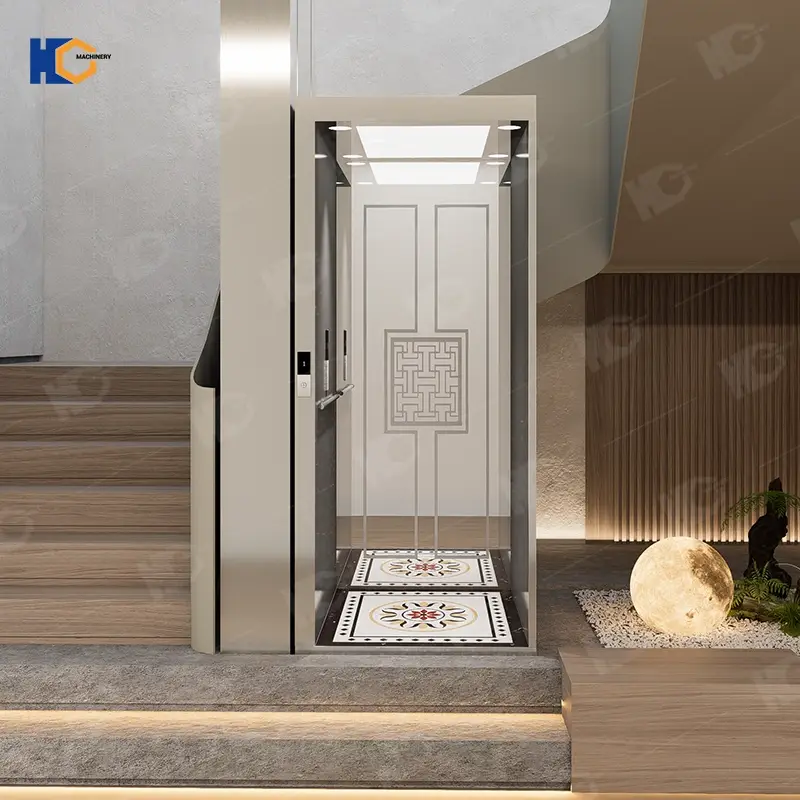
Stair Lifts vs. Home Elevators: Choosing the Right Mobility Solution
When considering residential mobility options, homeowners often weigh stair lifts against full home elevators—each serving distinct needs based on budget, space, and long-term requirements.
Stair Lifts are the more economical choice, typically costing 70-90% less than a full elevator installation. These track-mounted chairs require minimal structural modification, attaching directly to existing staircases with a footprint of just 12-16 inches. Ideal for single-user mobility in tight spaces, stair lifts work well for temporary recovery situations or single-floor transitions. However, they lack the versatility of elevators, accommodating only one seated passenger at a time and potentially obstructing stairway access for others. Most models have weight limits under 300-350 pounds and offer no cargo capacity beyond small personal items.
Home Elevators represent a comprehensive mobility solution, providing full-vehicle accessibility and future-proofing a home. While requiring 10-20 square feet of floor space and significant installation (including possible structural reinforcements), elevators accommodate wheelchairs, multiple passengers, and heavy items between floors. Modern residential elevators feature customizable cabs, silent operation, and speeds up to 200 feet per minute. They're particularly valuable in multi-generational homes or for aging-in-place planning, where future mobility needs may escalate. Energy-efficient models now rival stair lifts in operating costs, though initial investments remain substantially higher.
Key Decision Factors:
Budget: Stair lifts ($3,000-$10,000) vs. Elevators ($30,000-$100,000+)
Space: Stair lifts preserve floor space vs. elevators requiring dedicated shaft areas
Mobility Needs: Stair lifts for individual seated use vs. elevators for wheelchairs/cargo
Home Value: Elevators typically increase resale value more significantly
Aesthetics: Modern elevators offer design integration vs. stair lifts' utilitarian appearance
For homeowners anticipating long-term needs or desiring whole-home accessibility, elevators provide superior functionality despite higher upfront costs. Stair lifts serve best as economical, short-term solutions where minimal disruption is paramount. Recent hybrid options like through-floor lifts bridge some gaps, but the choice ultimately depends on the household's specific mobility requirements and renovation capabilities.
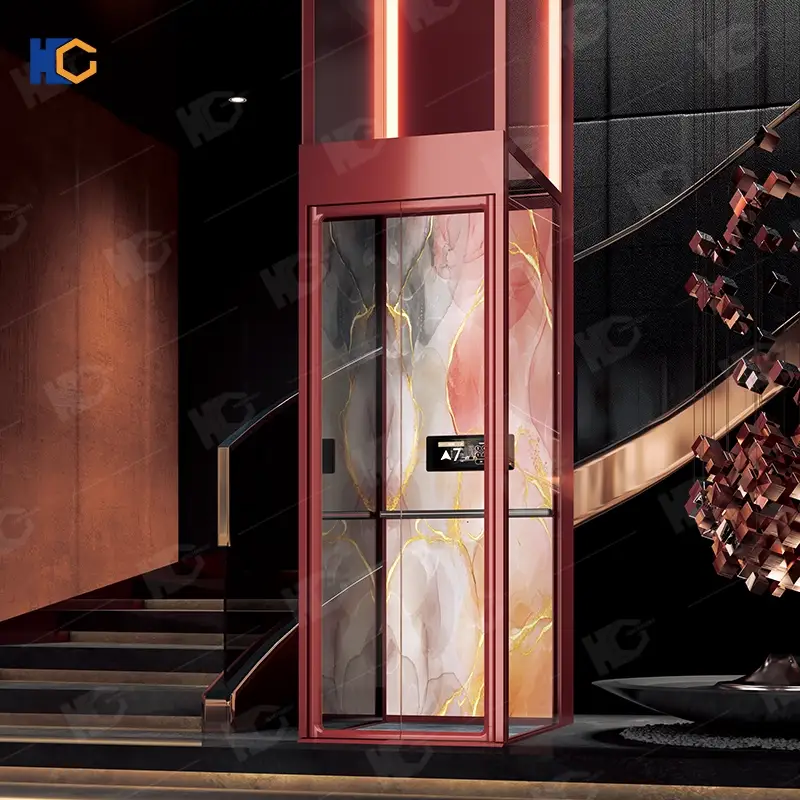
How to Choose the Right Home Elevator: A Step-by-Step Decision Guide
Selecting the perfect home elevator involves balancing space constraints, budget, usage needs, and design preferences. Here’s a detailed comparison framework to help you make the best choice:
1. Space Available: Does Your Home Need a Pit or Machine Room?
Hydraulic Elevators: Require a machine room (for pumps/reservoir) and possibly a shallow pit. Best for homes with dedicated space.
Traction (Cable-Driven): Needs overhead clearance for machinery (unless machine-room-less/MRL). Compact models fit in tight shafts.
Pneumatic (Vacuum): No pit or machine room—ideal for retrofits and small spaces.
Chain/Winding Drum: Minimal space needed; fits in existing shafts without major modifications.
Ask Yourself:
✔ Can you allocate space for a machine room or overhead equipment?
✔ Are you willing to modify your home’s structure for installation?
2. Budget: Upfront Cost vs. Long-Term Maintenance
| Type | Installation Cost | Maintenance Cost | Energy Efficiency |
|---|---|---|---|
| Hydraulic | $$$ | Moderate (fluid checks) | Lower (higher energy use) |
| Traction | $$$$ (gearless) / $$ (geared) | Low (cable inspections) | High (regenerative drives available) |
| Pneumatic | $$$ | Low (vacuum pump care) | Moderate (air compression uses energy) |
| Chain-Driven | $ | Moderate (chain lubrication) | Medium |
Ask Yourself:
✔ Are you prioritizing lower upfront costs or long-term savings?
✔ Can you budget for periodic maintenance (e.g., hydraulic fluid vs. chain inspections)?
3. Usage: Frequency, Weight Capacity & Speed
Frequent Use (Daily): Traction or hydraulic (durable, smooth rides).
Heavy Loads (Wheelchairs/Cargo): Hydraulic (1,000+ lbs capacity).
Speed Needs: Traction (fastest, 100-200 ft/min) > Hydraulic > Pneumatic (slowest, ~30 ft/min).
Low-Use/Secondary Access: Chain-driven or pneumatic (budget-friendly).
Ask Yourself:
✔ How many passengers or how much weight will the elevator carry?
✔ Do you need quick floor-to-floor transit (e.g., for multi-story homes)?
4. Aesthetics: Glass Cab vs. Enclosed Traditional Design
Modern/Open Feel: Pneumatic (all-glass tube) or glass-panel traction elevators.
Classic/Luxury: Wood-paneled hydraulic or traction cabs.
Space-Saving: Chain-driven with compact sliding doors.
Ask Yourself:
✔ Should the elevator blend in or stand out as a design feature?
✔ Do you prefer panoramic views (glass) or privacy (enclosed)?
Final Checklist for Decision-Making
Measure available space (shaft dimensions, ceiling height, pit feasibility).
Set a budget (include installation + 5-year maintenance estimates).
List usage needs (capacity, speed, frequency).
Match to your home’s style (contemporary, traditional, minimalist).
Consult a specialist for a home assessment and custom quote.
By evaluating these factors systematically, you can identify the best home elevator type for your lifestyle, whether it’s a sleek pneumatic lift for a condo or a heavy-duty hydraulic system for a luxury estate.
FAQs About Home Elevator Types: Your Top Questions Answered
1. "Which is the cheapest type of home elevator?"
✅ Answer: Chain-driven and pneumatic (vacuum) elevators are generally the most affordable options.
Chain-driven: Low upfront cost (~$15,000–$25,000), simple mechanics.
Pneumatic: No pit or machine room needed (~$20,000–$35,000), but limited to 2-3 floors.
Budget tip: Geared traction elevators can also be cost-effective for mid-range budgets.
2. "Can I install a home elevator in an old house?"
✅ Answer: Yes, but some types require more modifications than others:
Best for retrofits: Pneumatic (no structural changes) or chain-driven (compact).
Challenging but possible: Hydraulic (needs machine room) or traction (requires overhead space).
Key consideration: Consult an engineer to assess floor strength and shaft space.
3. "Are pneumatic elevators safe?"
✅ Answer: Yes, when used within design limits:
Safety features: Emergency brakes, backup batteries, and manual descent controls.
Limitations: Weight capacity (~500 lbs) and slower speed (~30 ft/min).
Ideal for: Small homes, not for heavy wheelchairs or frequent heavy loads.
4. "How much space do I need for a home elevator?"
✅ Answer: It depends on the type:
Minimal space (3'x3'): Pneumatic or chain-driven.
Standard (5'x5'): Hydraulic or traction (with machine room or overhead).
Pro tip: Sliding doors save space vs. swing doors.
5. "Which elevator type is best for wheelchairs?"
✅ Answer: Hydraulic (high weight capacity, smooth ride) or traction (spacious cabs).
Avoid pneumatic (low capacity) unless for ambulatory use only.
6. "Do home elevators add value to my property?"
✅ Answer: Yes, especially in luxury markets or aging-in-place communities.
ROI: Up to 10–15% home value increase (varies by market).
7. "How often do home elevators need maintenance?"
✅ Answer:
Hydraulic: Annual fluid checks.
Traction/Chain: Bi-annual cable/chain inspections.
Pneumatic: Yearly vacuum pump service.
Conclusion: Finding Your Perfect Home Elevator
Choosing the right home elevator depends on your unique needs, space, and budget. Hydraulic elevators excel in heavy-duty use, offering smooth rides for wheelchairs and frequent use, while traction systems provide energy efficiency and speed for multi-story homes. Pneumatic (vacuum) elevators are ideal for compact spaces with minimal installation requirements, and chain-driven models offer an affordable solution for low-rise homes.
Each type has distinct advantages, so consider space constraints, budget, usage frequency, and design preferences before deciding. For tailored advice, consult a certified elevator specialist who can assess your home and recommend the best system.
Ready to take the next step? Get a personalized quote today or Schedule a free consultation with our experts to find the perfect elevator for your home!
